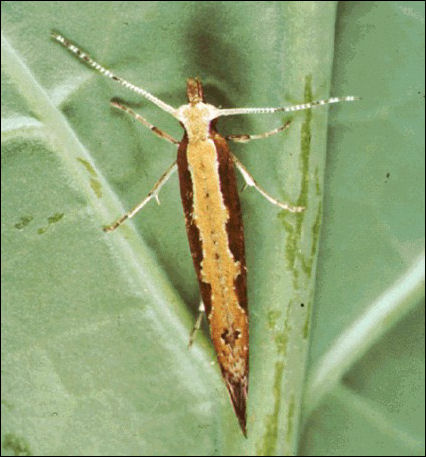Pest
Diamondback moth: Plutella xylostella
The caterpillars feed on the leaf epidermis and later make holes in the leaves. Severely affected leaves are completely skeletonised. It is one of the most serious pests of cauliflower grown under comparatively high temperature conditions.

Control: Spraying the crop with malathion (0.1%) gives excellent control of the larvae. Trap cropping with mustard attracts the pest population towards it, which can be destroyed by spraying dichlorvos (1ml/litre).
Diseases
Stalk rot: Sclerotinia sclerotiorum
Symptom starts as circular water-soaked areas, which becomes soft and watery as the disease progresses. The fungus eventually colonizes the cabbage head and produces large, black, seed like structures. This fungus can cause serious losses in the field, in storage, and under transit and market conditions.
Control: Avoid planting cabbage and other susceptible crops in fields infested with white mold. Mechanical injuries to flower heads during harvesting operations should be avoided.
Black rot: Xanthomonas campestris pv. campestris
The infected tissue turns pale green yellow, which later becomes brown and dies. Affected areas enlarge and severely affected leaves may drop off. The veins in infected leaves, stems, and roots become black. The heads of the infected plants remain small and its quality is reduced making it unfit for marketing.

Control: Avoid continuous cropping of crucifers in the same field. Use black rot tolerant varieties. Treat the seeds with agrimycin-100 (100ppm) or streptocycline (100ppm). Planting should be done on raised beds to facilitate drainage. Remove and destroy affected plants.
